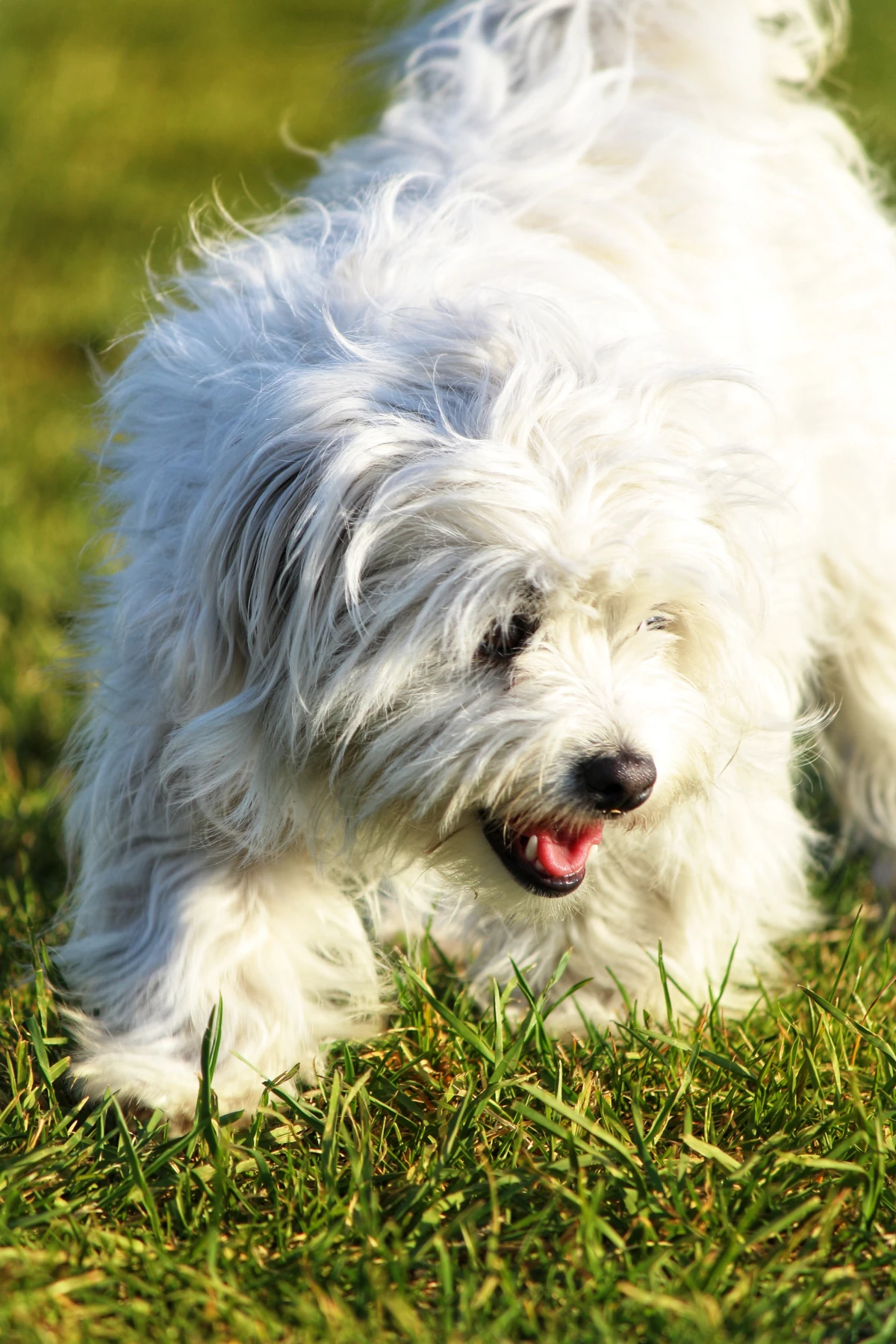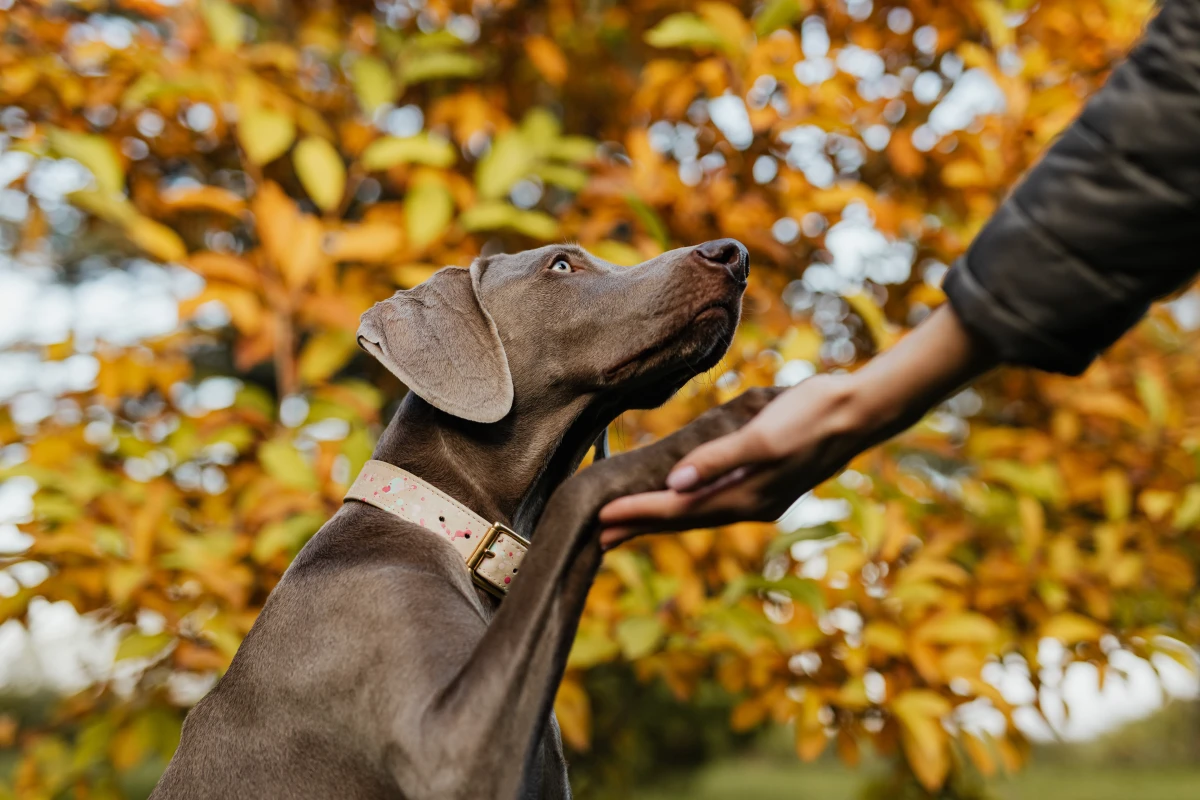Let’s Be Honest: 5 Dog Myths That Might Be Hurting Your Pet
I’ve spent years in the world of dogs, from the chaotic floors of animal shelters to the focused environment of professional training. And in all that time, one thing has blown my mind: the sheer amount of bad advice that gets passed around as gospel. Honestly, these aren’t just quirky old tales. They change how we interact with our dogs, and getting it wrong can seriously impact their well-being.
In this article
A lot of these myths have been around for so long they feel like common sense. But our dogs are counting on us to get it right, to learn their language and understand their needs. It means we have to be willing to question what we think we know. So, let’s clear the air on some of the biggest misunderstandings I see every single day. This is all about building a stronger, more honest bond with our four-legged family members.
Myth 1: Dogs See in Black and White
This is probably the oldest one in the book. And while it’s not totally wrong, it’s definitely not right, either. Your dog doesn’t live in a grayscale movie, but their view of the world is a lot different from ours. It really just comes down to some basic eye science.

You see, our human eyes have three types of color-detecting cells, letting us see a rich spectrum of reds, greens, and blues. Dogs, however, only have two. Their vision is what’s known as dichromatic, which is a fancy way of saying they see the world mostly in shades of blue and yellow-green. They can’t really tell the difference between red and green—to them, it all looks like a muddle of brownish-gray. Think of it like a human with red-green color blindness.
That brand-new, bright red ball you bought? On a green lawn, it practically disappears for your dog. I’ve watched so many owners get frustrated, thinking their dog is being lazy or stubborn when it can’t find a toy. The truth is, the dog probably can’t see it very well!
But where they lack in color, they make up for it in other ways. Their eyes are packed with more rods, which are fantastic at picking up motion and seeing in low light. It’s an evolutionary perk from their predator ancestors.

A Quick Tip: When you’re shopping for toys, especially for fetch, choose colors that pop in your dog’s world. Blues and yellows are a slam dunk. Forget the reds and oranges. Look for something like the bright blue KONG Classic or the yellow and blue Chuckit! Ultra Ball. They stand out beautifully against grass and dirt.
Want a fun little experiment? Try this today: Roll a blue toy and a red toy for your dog on the grass. See which one they find faster! You might be surprised.
Myth 2: A Wet, Cold Nose Means a Healthy Dog
Oh, the classic nose-touch test. We’ve all done it. We feel a cool, damp nose and think, “Phew, everything’s fine.” While a wet nose is common, it is a terrible way to gauge your dog’s health. A dog’s wellness is a big picture, and the nose is just one tiny, often misleading, pixel.

So, why is a dog’s nose usually wet anyway? For one, they secrete a thin mucus that helps trap scent particles from the air, boosting their amazing sense of smell. They also have tear ducts that drain into their nose, and they lick it constantly. But a dog that just woke up from a nap will almost always have a warm, dry nose. So will a dog that’s a bit dehydrated or has been snoozing in the sun. None of these things automatically mean your dog is sick.
The 5-Minute Weekly Health Check You Should Do Instead
As a pro, I can tell you we never rely on the nose. Instead, learn to look for the real signs of health. Once a week, take five minutes to do a quick once-over:
- Check the Gums: They should be pink and moist. Gums that are pale, white, or bluish are a red flag for an emergency vet visit. Good to know: Some breeds have naturally black or spotted gums. The key is knowing what’s normal for your dog. Check them when they’re healthy so you have a baseline to compare against.
- Gauge Their Energy: A sudden, unexplained drop in energy is a huge sign something is off. If your zoomy dog is suddenly a couch potato, pay attention.
- Look in Their Ears: Gently lift the ear flaps. The skin inside should be clean and light pink, with no funky smell or dark debris.
- Do a Full-Body Pet-Down: Run your hands firmly but gently all over your dog’s body, feeling for any new lumps, bumps, or sensitive spots they shy away from.
- Watch Their Habits: Keep an eye on their food and water intake, as well as their bathroom habits. Anything out of the ordinary—diarrhea, constipation, straining to pee—is worth noting.
Heads up! A dry nose on its own is usually fine. But if the nose is also cracked, has sores, or has a thick yellow or green discharge, that’s a reason to call the vet.

Myth 3: Dogs Eat Grass to Make Themselves Throw Up
This is a classic case of seeing two things happen and assuming one caused the other. Dog eats grass, dog throws up… so the grass must be an emetic, right? Well, not really. Research shows that fewer than a quarter of dogs actually vomit after eating grass, and most aren’t sick before they start munching.
So what’s the real reason? There are a few good theories:
- They just like it. Yep, sometimes the simplest answer is the right one. Some dogs seem to enjoy the taste and texture of fresh grass.
- They’re bored. Especially with younger dogs, I see it as a way to pass the time. It’s a bit of texture, a bit of green fiber.
- It’s instinct. Their wild ancestors might have eaten plants to help purge intestinal parasites. The behavior could just be a leftover instinct that doesn’t serve much purpose anymore.
The grass itself isn’t the problem. The real danger is what could be on it. I once worked with a client whose dog became terribly ill with tremors and vomiting. It turned out the neighbor had just sprayed their lawn. The dog only ate a little bit, but it was enough to cause a scary medical emergency.

Before you let your dog graze, be 100% sure the area is free of pesticides, herbicides, and fertilizers. Public parks and other people’s lawns are always a gamble. If you treat your own lawn, look for products specifically labeled ‘pet-safe,’ or consider using natural alternatives like corn gluten meal, which you can find at garden centers.
By the way, when should you worry? If the grass-eating is obsessive, happens all the time, or is paired with other signs like constant vomiting or lethargy, it’s time to check in with your vet.
Myth 4: You Can’t Teach an Old Dog New Tricks
This one just makes me sad. It’s not only completely false, but it’s also so unfair to amazing senior dogs who are waiting for a home. It’s often used as an excuse to give up on an adult dog with some behavioral quirks.
Are they different to train than a puppy? Absolutely. A puppy’s brain is a little sponge, wired for fast learning without a lifetime of habits to undo. An older dog might have some baggage. You’re not just teaching a new behavior; you might be un-teaching an old one first. This just means you need more patience and a slightly different game plan.

I once worked with an 8-year-old Shepherd mix who was surrendered for being destructive. The poor girl had terrible separation anxiety. We started with super short, positive sessions—just a few minutes at a time—using high-value treats. We weren’t just teaching ‘stay’; we were teaching her that being alone was safe. It took a few months of consistent, gentle work, but she learned to be calm and happy. She learned a new trick: confidence.
Tips for Training Your Senior Dog
- Keep it Short & Sweet: An adult dog’s focus isn’t endless. Aim for 5-10 minute sessions, once or twice a day.
- Use the Good Stuff: That dry biscuit isn’t going to cut it. We’re talking high-value currency! Think tiny bits of boiled chicken, string cheese, or store-bought soft treats like Zuke’s Mini Naturals, which you can get for about $5-8 a bag online or at most pet stores.
- Be Patient: You’re rewriting history here. There will be good days and bad days. Celebrate the small wins and don’t get discouraged.
- Rule Out Medical Issues: If a senior dog is struggling, it might be physical. Hearing or vision loss can make cues hard to follow, and arthritis can make sitting painful. A quick vet check is always a great first step.
A common mistake here is inconsistency. If one person is patient and another is pushy, or if different family members use different commands, the dog just gets confused. Everyone in the house has to be on the same page for it to work.

Myth 5: A Wagging Tail Always Means a Happy Dog
This is easily the most dangerous myth on the list. Believing that a wagging tail always means ‘come pet me’ can lead to bites. A tail is a complex communication tool, and it expresses everything from pure joy to intense anxiety and aggression. It’s like thinking all human shouting is happy.
To really understand what a dog is saying, you have to look at the whole picture—the speed and height of the wag, plus the rest of the dog’s body language.
Here’s a quick guide to tail-speak:
The ‘Happy-to-See-You’ Wag: This is the one we all love. It’s a broad, sweeping, full-body wag. The dog’s body is relaxed and wiggly, and the tail might even move in big circles. This is a genuinely friendly greeting.
The ‘Something’s Up’ Wag: This one is faster and held higher, sometimes straight up like a flagpole. This signals a high level of arousal or excitement. That excitement could be positive (your best friend is at the door!) or negative (there’s a strange dog on my lawn!).

The ‘I’m a Little Worried’ Wag: Look for a low, fast, almost twitchy wag. The tail is held below the spine, sometimes tucked a bit. The dog is signaling anxiety or trying to appease you. This is not a happy dog.
The ‘Back Off’ Wag: This is the critical one everyone needs to recognize. The dog’s body often goes stiff and still. The tail is held high and rigid, and it wags with a very fast, short, vibrating motion. This is a warning. It’s a sign of extreme tension, and a dog showing this is on a hair-trigger.
It’s All About Listening Better
Busting these myths isn’t about being a know-it-all; it’s about being a better partner to our dogs. It’s about trading old assumptions for careful observation. When we take the time to learn what their bodies are telling us, what their behavior really means, and what they can actually see, we build a level of trust and communication that’s truly special. And honestly, isn’t that why we have dogs in the first place?

Inspiration:

A dog’s nose has up to 300 million olfactory receptors, compared to about six million in humans.
This isn’t just a fun fact; it fundamentally changes how your dog perceives the world. While we see a park, they smell a complex social network of who has been there, their mood, and what they ate. The next time you’re on a walk, try letting your dog lead the way on a










